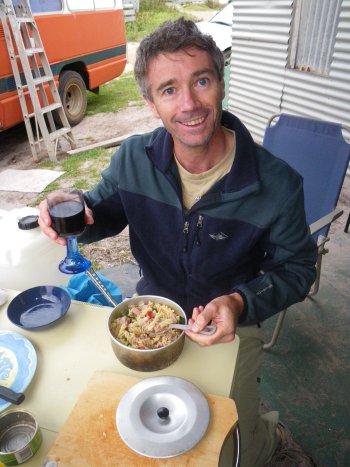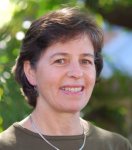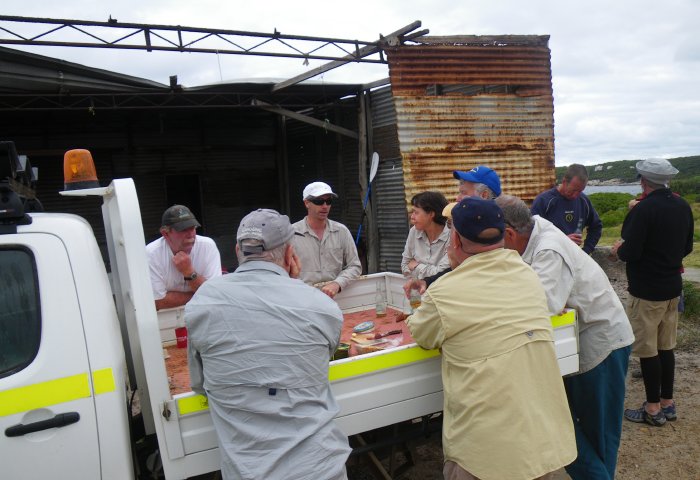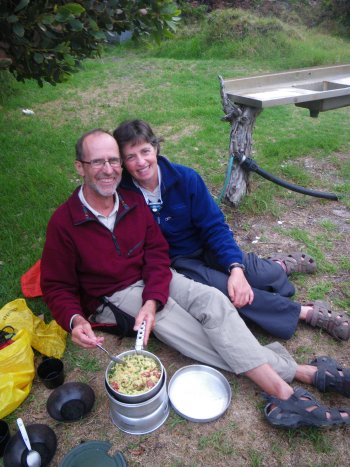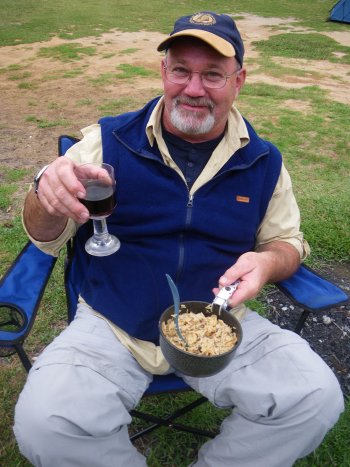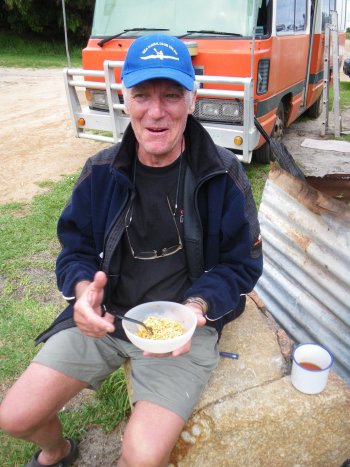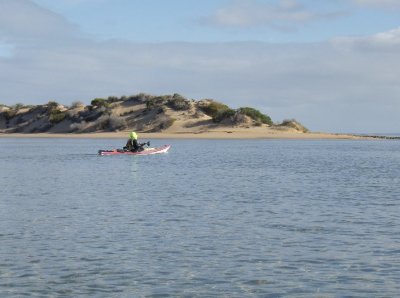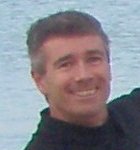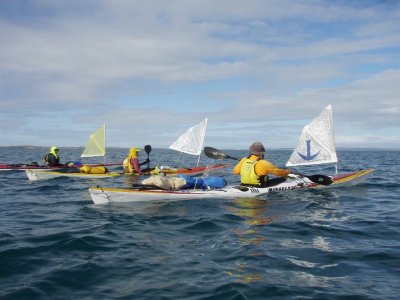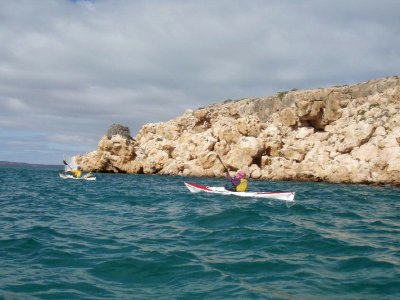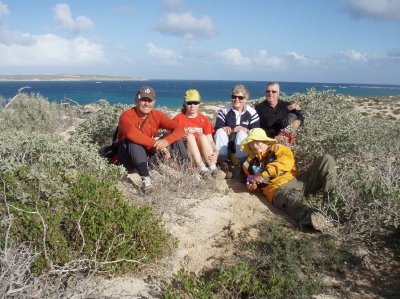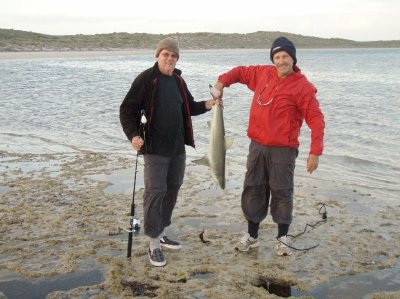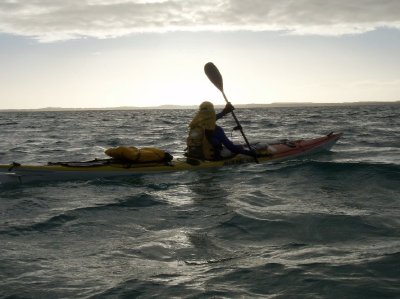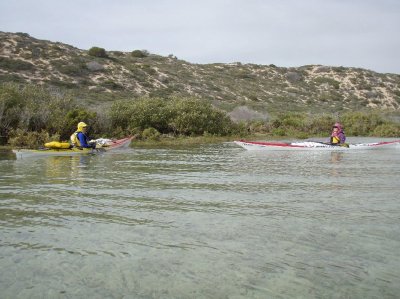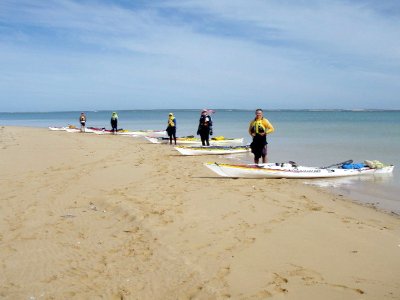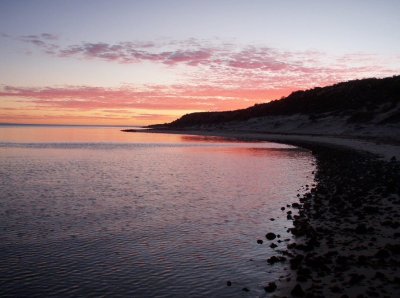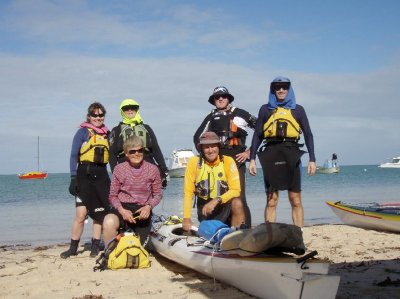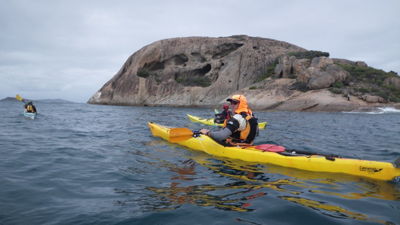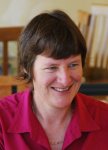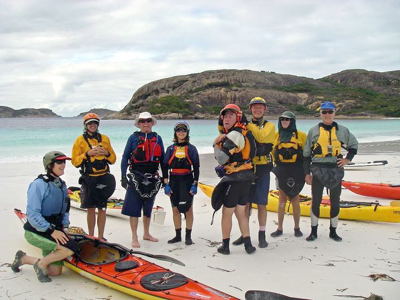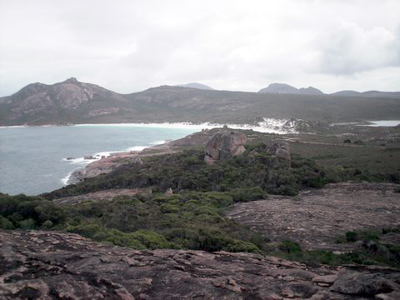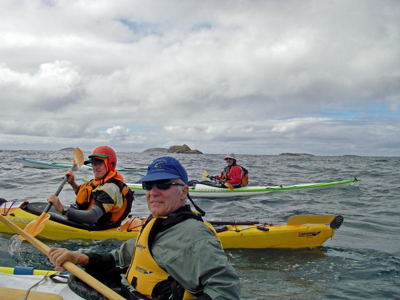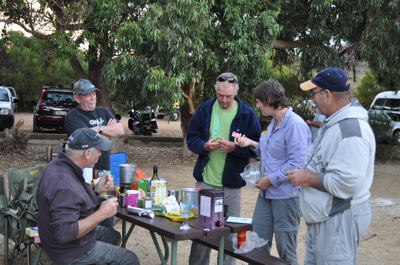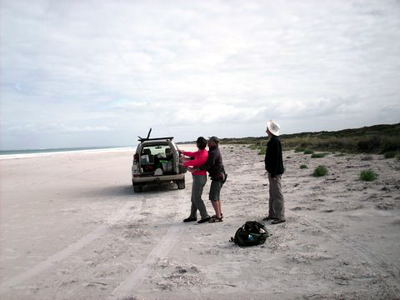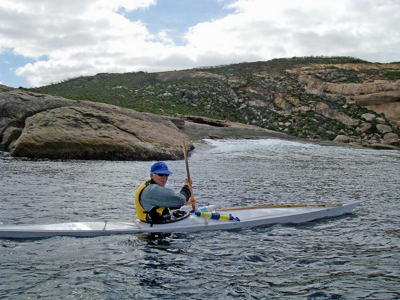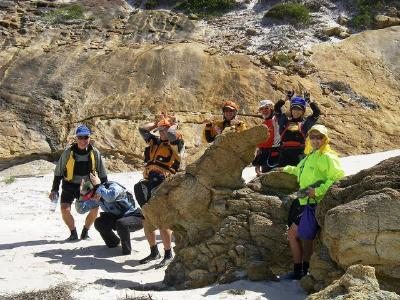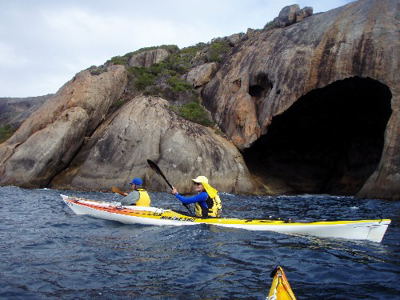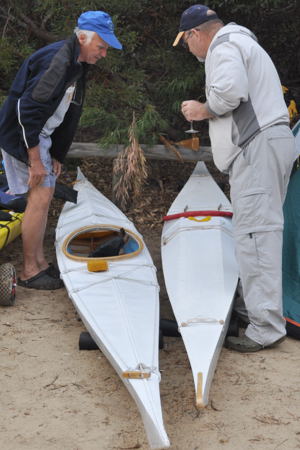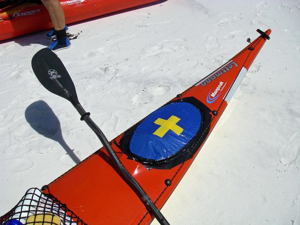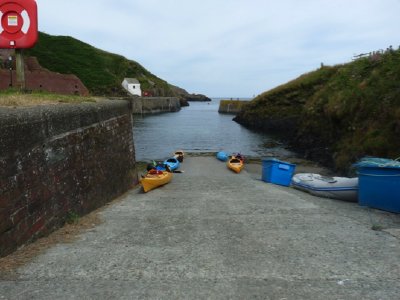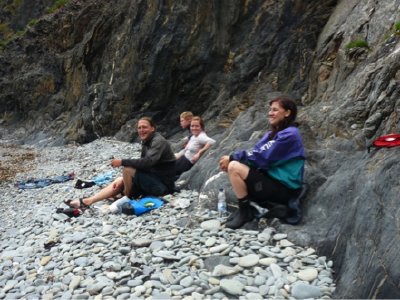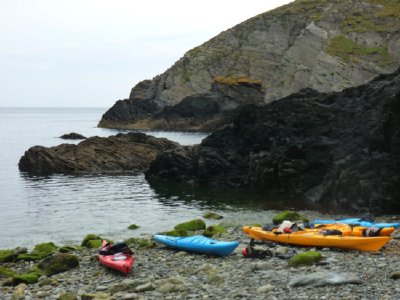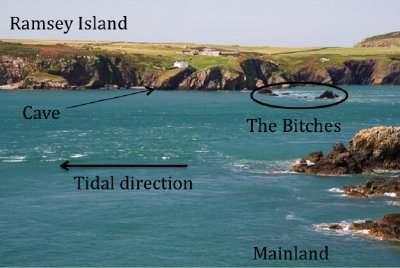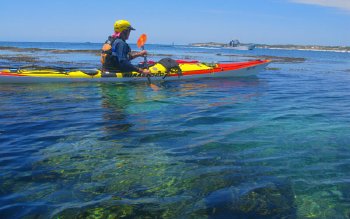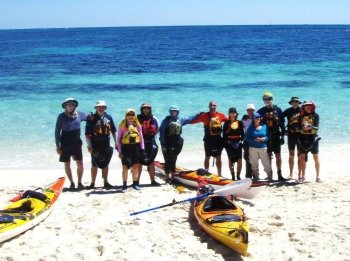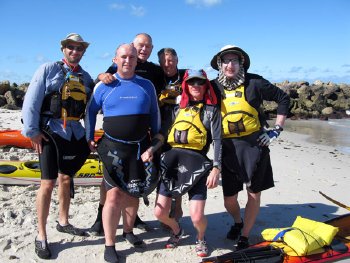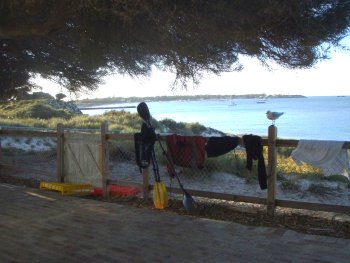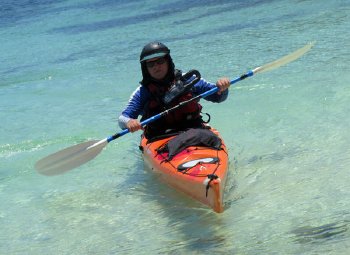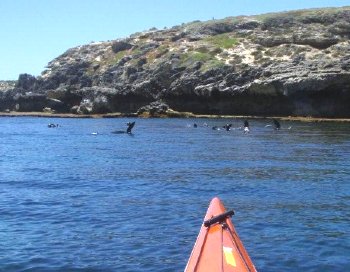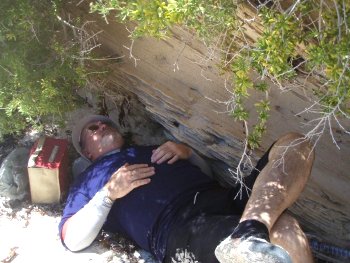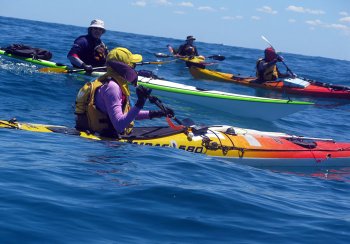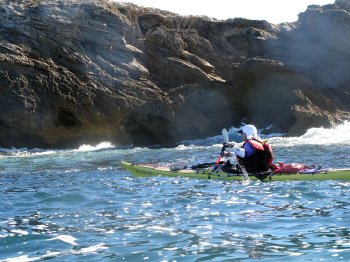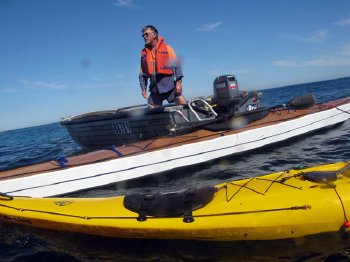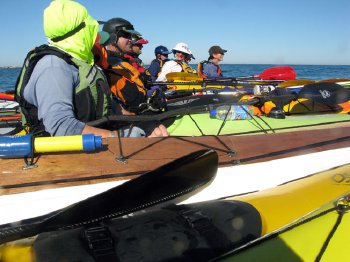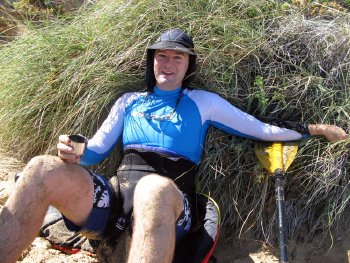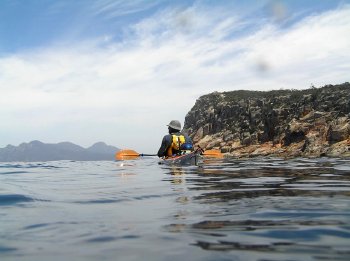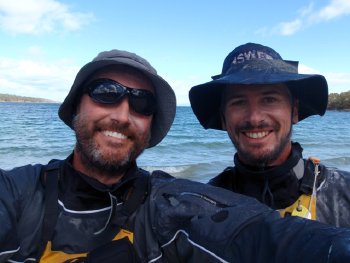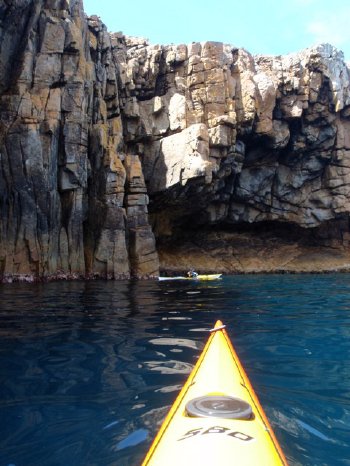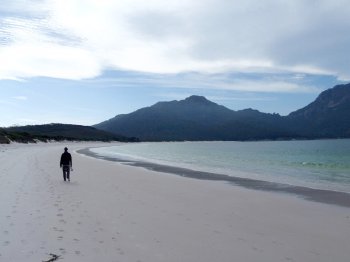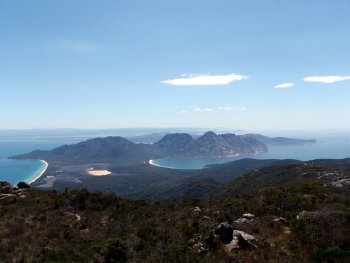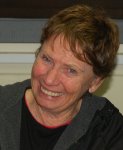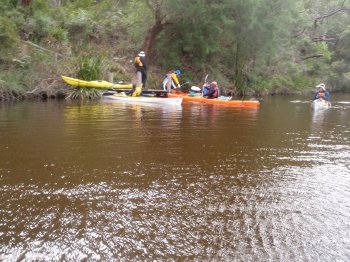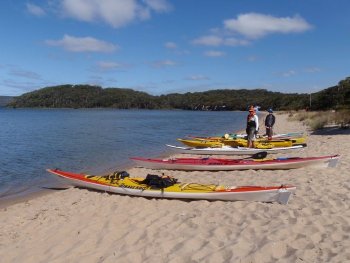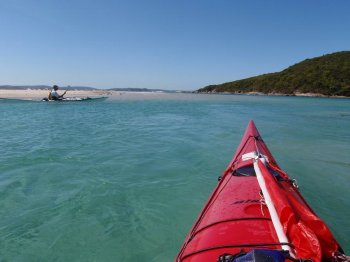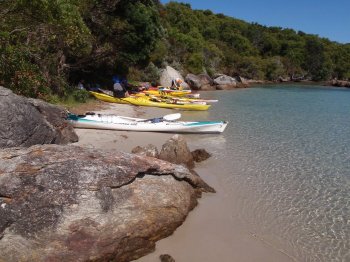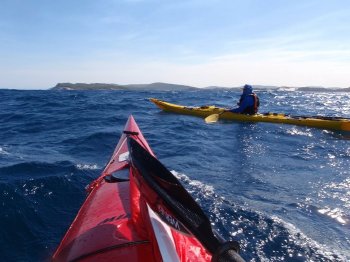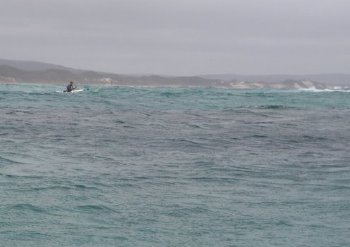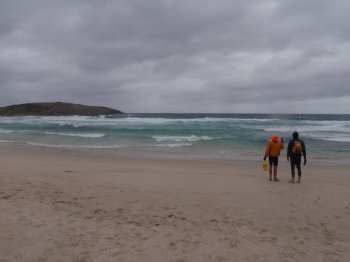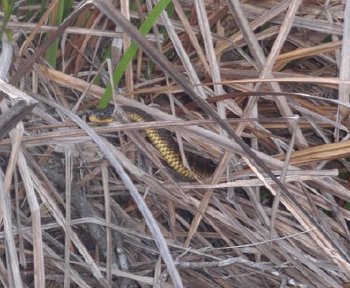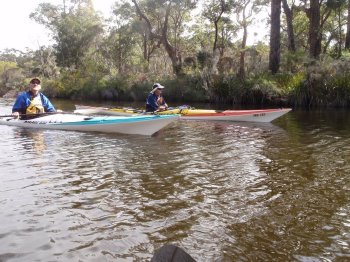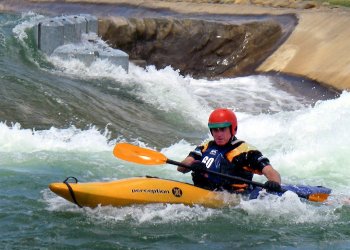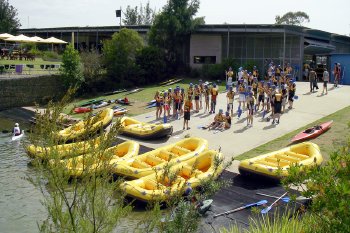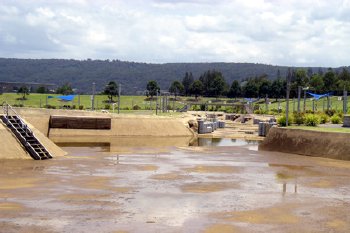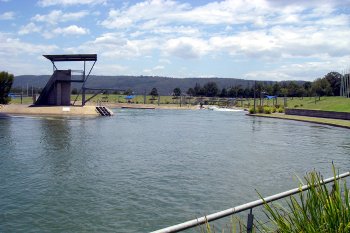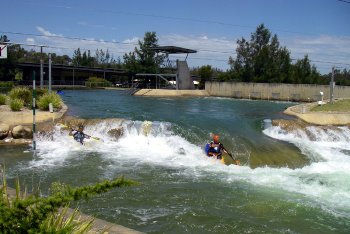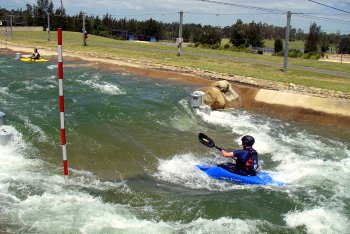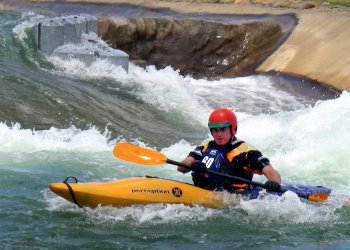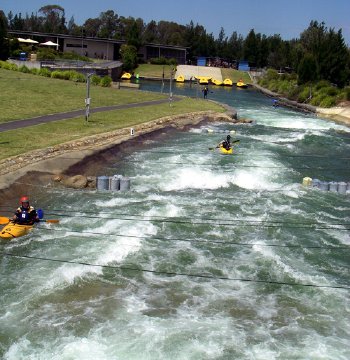|
Story and photographs by
Martin Burgoyne |
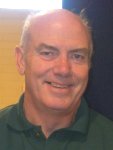 |
Following a poor winter in terms of rain and river levels, a few of the club’s ‘white water warriors’, or should that be geriatric warriors, were eager for some action.
WA doesn’t have too much white water that you can count on. There’s the Avon, an overrated drain, and a magnet for wana-be marathon boaters. The Collie, which at least has some decent rapids, is worth the drive, but the level depends if the cows down around Harvey are feeling thirsty enough for there to be a water release from Wellington dam. There’s the Murray, now that’s a decent river, easy above the infamous Boy Scouts spout, entertaining in its middle section, and in its lower race down the scarp to Pinjarra, it’s a classic piece of white water, with enough technicality to test any white water junkie. There’s also the Blackwood, well at least it has some moving water sections, though hardly white water. There’s the Donnelly, an esoteric gem, that’s rarely paddled, and then getting to the put in through the brambles is a good grade 5 before you even start to paddle. The Frankland, hmmm, in flood it’s challenging and well worth a look, but watch out for the very large Karri trees across the river. The Pallinup, somewhere between Albany and Esperance, is supposed to be good if a little short – it’s still on my list of things to do.
Then there’s the Murchison! It’s spectacular sandstone gorges are a real tourist draw, with spectacular walks along the dry river bed, but when the occasional summer cyclone fills these to capacity, it provides WA’s biggest white water run.
So with poor winter rains, I only managed one lower Murray trip last year, compared to the dozen or so in the previous year. In need of an adrenalin fix a trip to Thailand was suggested. A friend had been the previous year and enjoyed a few days white water paddling with a company based close to Chiang Mai. He reported good grade 3/4 water, a pleasant ‘jungle’ camp, good equipment and a safety conscious set of guides. So plans were made for a white water fix. Al Hale, Rod Coogan, Dave Oakley and myself decided to give ‘Siam Rivers’ a try.
We booked four days on the Mae Taeng River, based out of their camp about an hours drive north of Chiang Mai, and added a trip on the more isolated Nam Wa River in the far north east of the country on the boarder with Laos. Our two week trip would be rounded off with some down hill mountain biking.
The week before we were due to leave for Thailand, the news was full of tales of severe flooding in central Thailand, oh dear, what had we let ourselves in for? Eager to practice my roll in readiness for the trip, I managed to split my eyebrow on the edge of our pool resulting in 9 stitches, which fortunately came out the day before we flew out. Meanwhile Dave had arrived in Chiang Mai, and his first email said that Chiang Mai was flooded. Al arrived next, and his emails said that Siam Rivers had reported that they had just lost two kayaks on the river due to the high water, and some over confident American paddlers! What were we letting ourselves in for?
Rod and I flew out together on Air Asia. An additional charge for sporting equipment, levied on our paddles had me fuming at Perth airport, but to no avail. We just called them ‘umbrellas’ on the flight home, and got through OK. Nook our guide, picked us up at Chiang Mia airport and having collected Dave and Al, we drove straight to Siam Rivers camp on the Mae Taeng. The drive up the heavily rutted road to the camp in an ancient combi-van, with no 4×4 was interesting, who needs big tyres and lots of ground clearance! As we drove up the valley Nook suggested that we took the opportunity to look at the main rapids. A good move!! While not in flood the river was certainly high, and the rapids we inspected looked particularly ugly. They were long and technical, certainly grade 4+, and with very little space between the main features to recover bits, pieces, bodies or your breath! I think the others were pleased when I said it looked too much for me! But Nook assured us that while this was the difficult middle section, the top section just below camp was an easier grade 3, with fast water, a few technical moves, some long catching pools, and plenty of time to get out before the middle section that we had seen!
Once settled into camp and with kayaks sorted out from the range of battered specimens that they had, we paddled the top section of the Mae Taeng. It was certainly bigger than most things in WA, and with a few meaty rapids to keep us on our toes, it provided us with good paddling and few swims over the next few days. We decided to raft the middle section with Siam’s guides, and were thankful we were in rafts rather than kayaks, as we watched their safety kayakers cruise down it with ease. But then they were half our age and did paddle it twice a day at least! The middle section had plenty of sticky pour-overs, some tight technical lines, and a distinct lack of eddies in which to catch your breath. However, having run it in the rafts, it seemed that the last rapid of this middle section was a possibility for the geriatric worriers, if we could just keep to the correct line!
So on the last day before we left for the Nam Wa, we decided to give it a go. We managed a short warm up paddle to the top of the rapid before giving it a quick inspection. Spray skirts on and away we went. Straight down the middle, avoiding the boulder garden on river left, a few power strokes to punch the stopper at the bottom, angle the kayak to river left as you punch the stopper to ensure you are lined up for the final race down the steps on the left, and that was it! It was an exciting run, and a more exciting swim for those intent on inspecting the river bed, and bruising their anatomy! But Siam’s safety boys were there with throw bags, so we all got to the bottom safely, if a little battered!
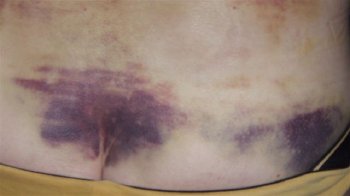
Pretty colours.
Next day we had a long drive to the regional capital of the Northern Province at Nam. An overnight hotel and then we were on our way again, getting to the Nam Wa river around lunch time. Our small expedition included two rafts, Nook and two more guides from Siam Rivers, and four more ‘sub-contracted’ guides from a rafting company in Nam. Seven of them, and four of us – a good ratio! One raft carried all the gear, food and camping equipment, while the other was available in case we decided to raft rather than kayak.
As we were almost on Thailand’s northern border with Laos it seemed that the monsoon rains which had flooded central Thailand, and given us a fright, had not reached that far inland. Our river was at its usual autumn level, and quite clear after the murky muddy waters in the Mae Taeng. We had three days on the river to look forward to. Nook suggested that it would be around grade 3+ with the occasional grade 4 that we might want to look at.
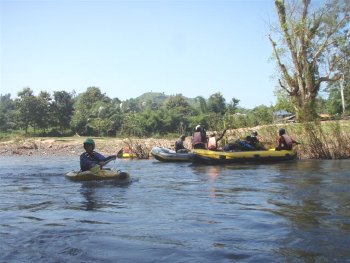
Ready to start on the Nam Wa River.
We started after lunch on the first day, and enjoyed the pristine jungle that the Nam Wa flowed through. We didn’t see any wildlife, but the swarms and variety of butterflies were amazing. All the rapids on the first day were ‘read and run’ which didn’t require us to get out of our kayaks. At every horizon line we paddled carefully forward, always ready for a sprint to the bank if we didn’t like what we saw. But everything was OK, and though it did result in a few rolls and swims, there was always a long pool at the bottom for us to gather up our bits and pieces.
Our first night’s camp was on the east, Laos’s side of the river. The rafting company from Nam had developed a rustic standing camp, complete with a benched eating area, a thatched camp kitchen with running water, some level ground on which to pitch tents, and three dunnies – quite impressive for the middle of nowhere! Our guides prepared supper while we erected tents, sorted sleeping bags, and hung our wet paddling gear out to dry.
Day 2
The guides where up early and had breakfast prepared while we packed our tents and gear. Nook said it was a 25 km day with some big rapids that we would be inspecting. The water was clear and so was easy to read, which was good as there where lots of grade 2/3 rapids that kept us entertained. None required any inspection, and we were able to creep up on them, scan the rapid from our kayaks and then hope we had sorted the best route down. There were a few rolls and swims but all was going well. The jungle was particularly lush and thick on the left bank, while on the right there was the occasional trace of human tracks.
We eventually came to the first rapid that Nook and the boys said we needed to inspect. It was formed where a particularly large side stream entered and which at some time had flooded and deposited large boulders across the river. The rapid was a one drop wonder, and took the form of a 2 metre drop over a boulder ledge into a river-wide stopper, which fortunately had a tongue in the middle. Our guides ran it and made it look easy – don’t they always. I ran it and decided yes it was easy, but the others declined to try. A little further and we had the second rapid to inspect. Formed by a similar boulder garden dumped by a side stream, it was more technical than the first and probably grade 4. It required some manoeuvering to weave around boulders and holes, but there was a good run out at the bottom. The guides did their stuff, and I ran it and had a roll at the bottom. But the roll worked – my first serious roll, since my out of boat experiences in New Zealand back in February. So I was pleased.
At our lunch stop, we watched our guides turning over every stone by the river looking for some sort of insect larvae. Evidently they were to be used as fish bait once we reached camp. We had a short stop in the afternoon to enable the guides to go fishing up a side stream, while one stayed behind and searched for bamboo grubs! Again to be used as fishing bait!
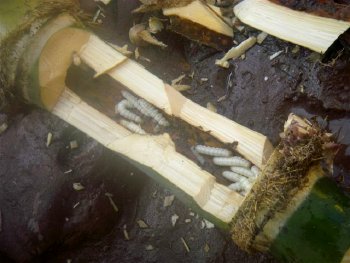
Bamboo grubs.
A few more read and run rapids and we reached camp two after a long day on the river. It was another remarkable site, with camp kitchen, dining areas complete with tables and benches and shade, level map sites and this time four dunnies!. The guides went fishing, and we were amazed at the size of the carp that the insect larvae had attracted to their lines. Dinner started with the small fish that the boys had caught that afternoon; the big monster was for them.
I retired early, a mixture of sun and dehydration. Dave and Rod decided to sleep out on the dining tables under the thatched roofs. It seemed a good idea. There had been a heavy dew the night before and we had woken to damp sleeping bags, but I was too tired to worry tonight!

How to catch dengue fever.
Day 3 was supposed to have a couple more rapids worthy of inspection but they all looked OK from the top and we ran everything on sight. The river opened out, the jungle-clad banks receded, and we were in farming land. A streamer stretched high across the river marked the approach of the take out. More guides for Nam were there to greet us with picnic lunches and bottles of Coke! It was all over.
We had a two day drive back to Chiang Mai to look forward to, but this time we were treated to the best hotel in Nam for our overnighter, and a sumptuous banquet with our guides on the banks on the Nam River. It had been a great trip and I had been surprised at the quality of the rivers we had paddled and the professional approach that Nook and his guides had displayed.
Back in Chiang Mia we had three days of the most memorable down hill mountain biking or more correctly jungle biking to round off the trip, but that’s another story!
Both Dave and Rod contracted Dengue Fever, or a close cousin, possibly as a result of their night on the dining table. While Dave ended up in Chiang Mai hospital, far from home, Rod was more fortunate and ended up in Mandurah hospital.
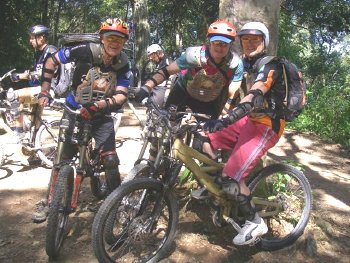
Born-again bikers.
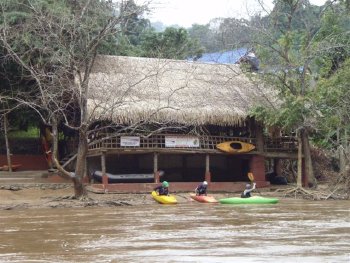
Mae Taeng base camp.
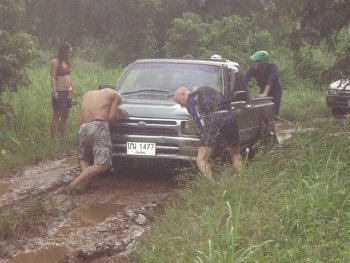
It rained!

Mae Taeng River.
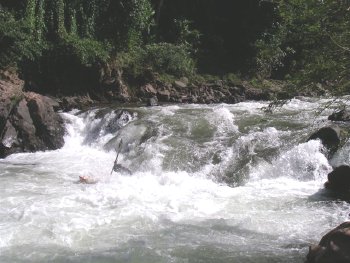
The first of the Nam Wa drops.
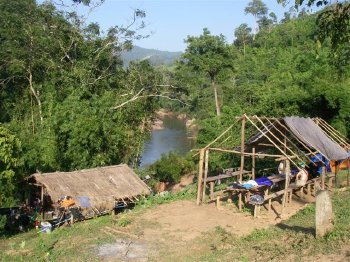
First camp on the Nam Wa River.
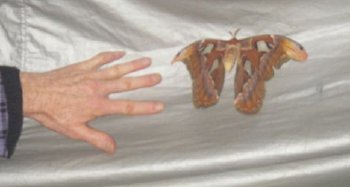
A small moth.
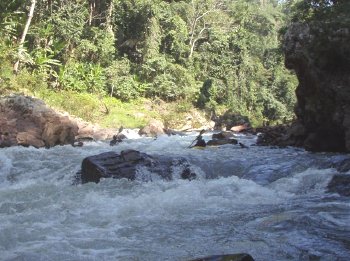
Nam Wa grade 2-3 rapids.
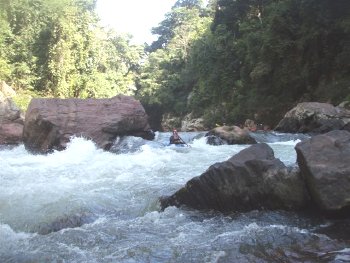
Al Hale.
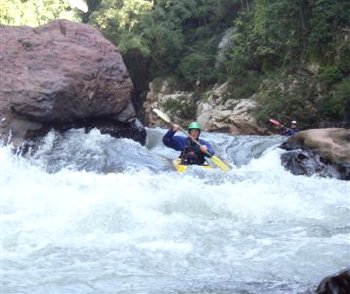
Rod Coogan.
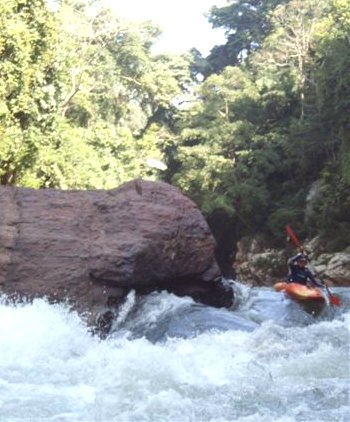
Dave Oakley.
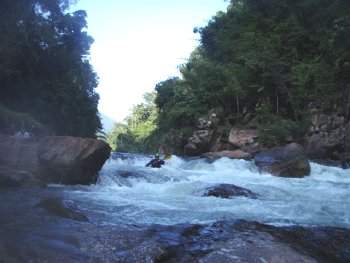
Nam Wa rapids.
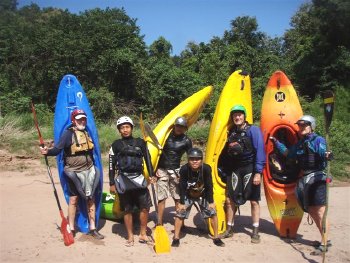
The team.
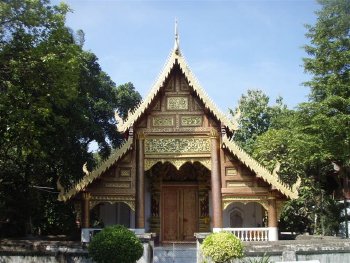
Thai Wat.

